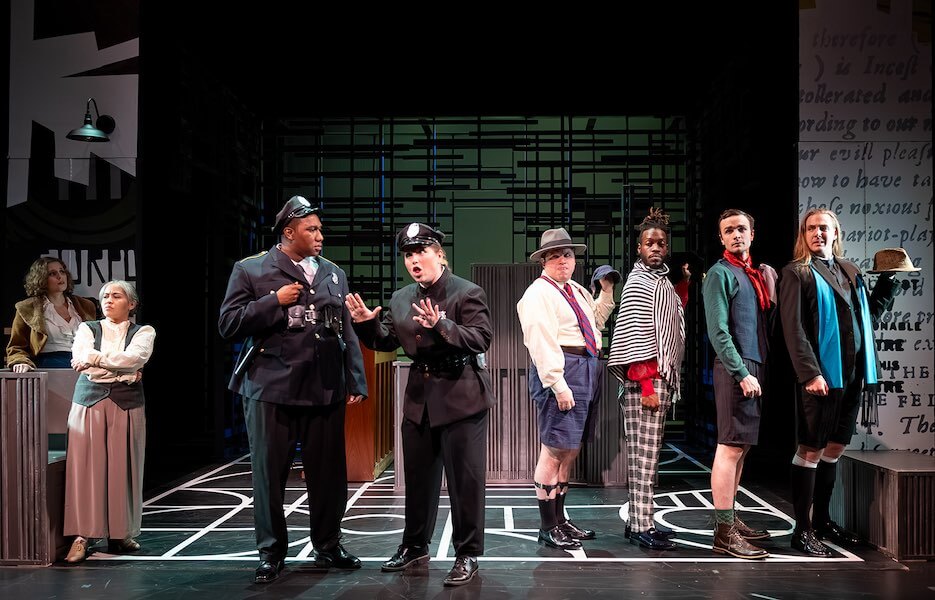Especially in recent years, from the beginning of the pandemic, Die sieben Todsünden (The Seven Deadly Sins) has become one of Weill’s most frequently produced works. Well over a hundred performances have taken place on four continents during this period. An impressive roster of top-tier institutions have produced the work, and the list of renowned conductors who have led it is almost too long to reel off: Simon Rattle, Riccardo Chailly, Joana Mallwitz, Esa-Pekka Salonen, Leonard Slatkin, HK Gruber, Marin Alsop, Vladimir Jurowski, James Holmes, Donald Runnicles, et al. We are rapidly reaching the point where it will be easier to list the major conductors who have NOT performed the Sins than those who have. The Seven Deadly Sins is one of those rare works that is equally effective whether staged or in concert. Many productions find an effective spot in between, including one recently led by conductor Stéphane Denève with soprano Danielle de Niese and the young musicians of the New World Symphony, the much-acclaimed Miami-based training orchestra. De Niese is the latest big-name soprano to take on the bivalent role of Anna, having already performed it multiple times in Europe. Denève, now in his second season as Music Director, selected the Sins in pairing with Viktor Ullmann’s Der Kaiser von Atlantis, as the first operatic double bill ever mounted by the NWS. Past programming has concentrated on orchestral repertoire. Bill Barclay served as stage director for the Weill. Writing in the South Florida Classical Review, Lawrence Budmen reports that “De Niese offered a star turn, combining a richly hued soubrette soprano with the idiomatic stylishness of protagonists of the era like Lotte Lenya (Weill’s wife) or Gisela May, a frequent Brecht heroine.” As for the conductor and musicians, “Denève had a field day with Weill’s pastiche score, conjuring up the jazz of the roaring twenties and romanticism of Weill’s future Broadway ventures in equal measure. The orchestra’s flexibility and idiomatic precision took a starring role that the conductor and cast acknowledged.” Die sieben Todsünden is now available in four versions, appropriate for a wide range of performance settings: the original 1933 soprano version for orchestra; the arrangement for low voice created in 1956 for Lotte Lenya by Wilhelm Brückner-Rüggeberg; an arrangement for two pianos and percussion by John Greer; and most recently an outstanding new version for fifteen players by HK Gruber and Christian Muthspiel. The fifteen-player version is currently available for high voice, with a parallel version for low voice forthcoming. Read here for FAQ about performance options. | 
